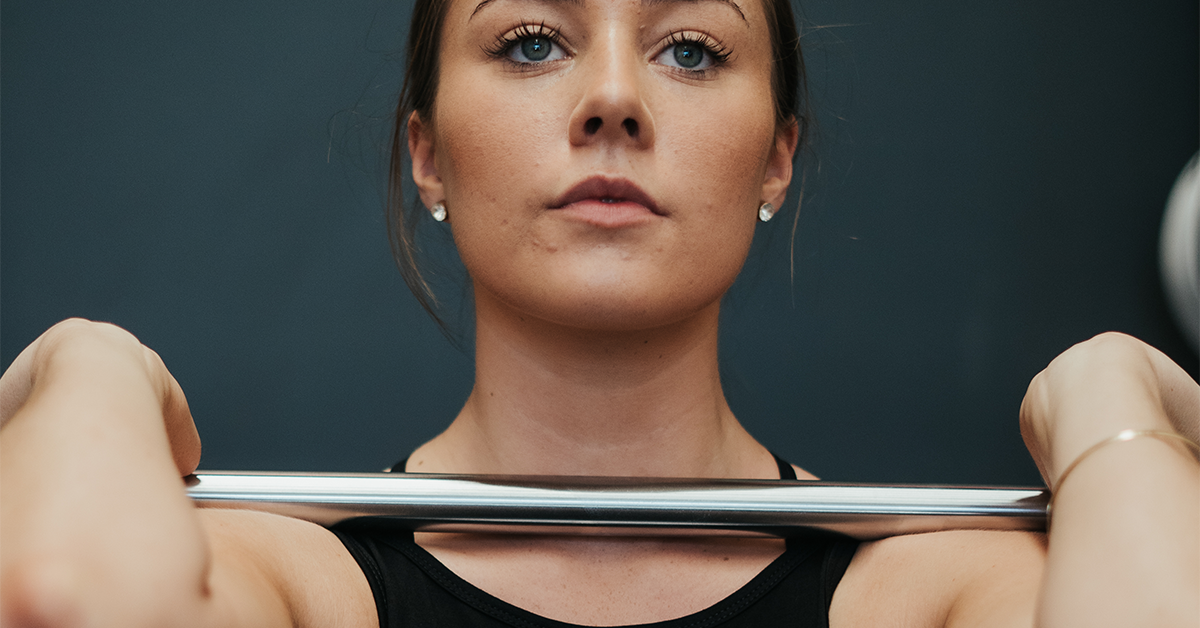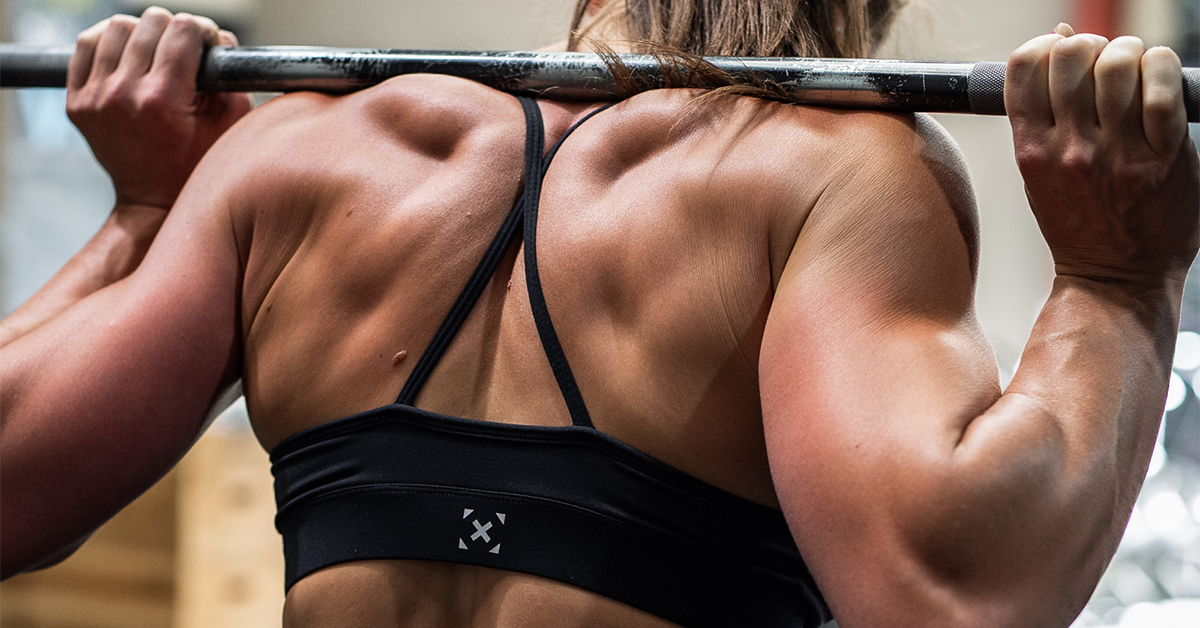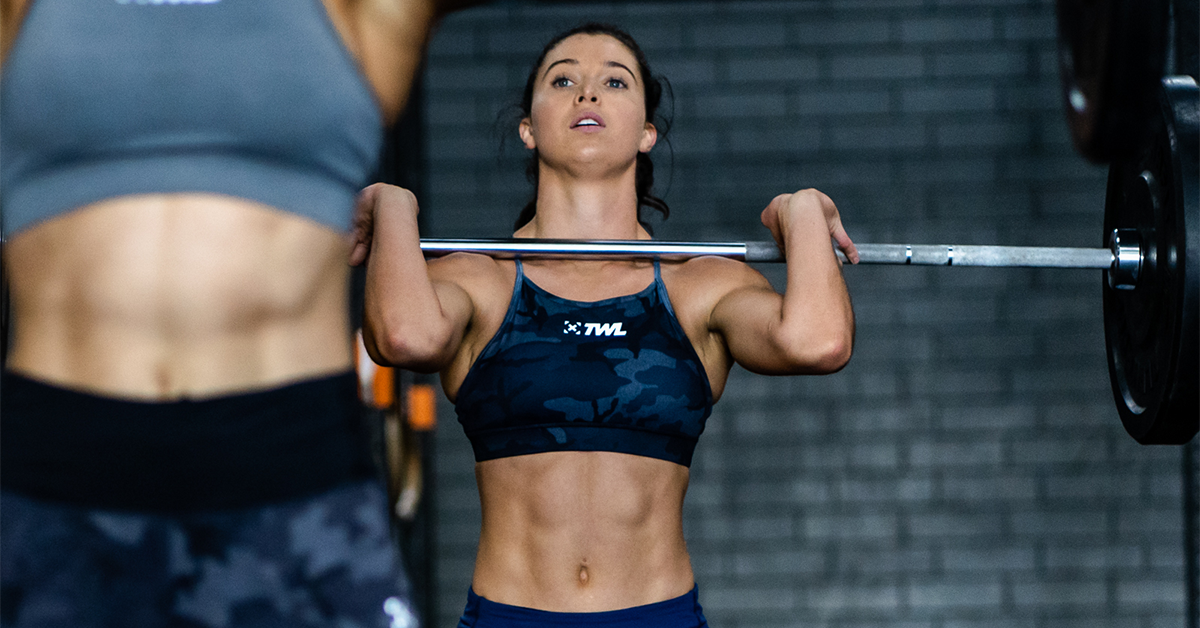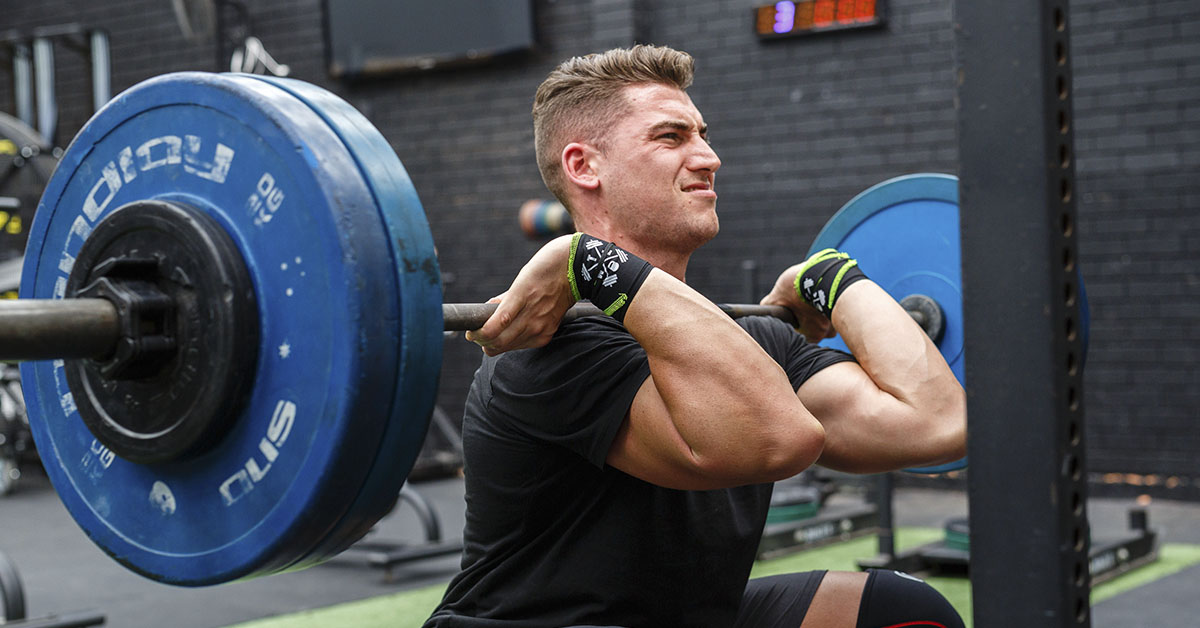The front squat is a staple in most athletes’ programming. Whether you’re a total newbie or a seasoned pro, you stand to reap the benefits of this compound movement. However, there’s one thing in particular that a lot of us struggle with: the front rack position. In fact, front squat wrist mobility is as difficult for some athletes as the squat itself.
How to Do the Front Squat
Let’s quickly run through what your standard front squat looks like.
The front squat works the glutes and quads with a barbell hitched across the collarbone. Because of the positioning, the front squat is an upper back workout, as well. Really, it’s a total body burn. Compared to back squats, the front squat is more gentle on the spine, simply because the weight is loaded at the front part of the body.
Here’s what it looks like, generally speaking:
- Rest the bar comfortably on the front of your shoulders, close to your neck.
- Position your hands shoulder-width apart on the bar, about a thumb’s distance from the barbell knurling.
- Push your elbows forward to help you keep your chest upright.
- Descend into a squat. Initiate the movement by bracing your core and keeping your spine neutral, and then send the hips down. Pause once you reach your bottom position.
- Squeeze your glutes and quads before extending your knees and returning to the starting position.
You might find these items helpful:
Shop Now
A weightlifting belt provides added stability and protects the spine. Wrist wraps protect your joints during front squats (and overhead movements). And knee sleeves keep the joints warm, help you get out of squats more easily, and reduce delayed onset muscle soreness.
For more help, see our front squat ultimate guide.
How to Improve Front Squat Wrist Mobility
To hold the barbell properly and perform the front squat safely, you need good wrist strength and mobility. These low-impact wrist exercises can help build strength and reduce the chances of injury while performing front squats.
Try these if you need help improving your front squat wrist mobility.
1. Wrist Rotations
This is a basic exercise that can be performed with or without weights, and even while sitting down. First, stretch both arms in front of you. Then, move your wrists in circles clockwise and counterclockwise. Keep your arms still while rotating your wrists.
2. Wrist Walk
Place your hands flat on a wall. Then, walk your hands down the surface, aiming for the lowest point. Do this without taking your palms off the wall. Once you can no longer move your hands downwards without significantly lifting your palms, slowly walk up to return to your starting position. You can also do it in the opposite direction.
3. Tandem Wrist Rolls
The tandem wrist roll is another drill that you can do to prepare your wrists for the impact and stretch they will experience when you do the front squat. Simply lock your fingers together so that your palms are touching, and move your hands in circles.
4. Prayer Position
Place your elbows on a table and put your palms together. Your arms should be touching from your elbows to your fingertips. Next, slide your elbows apart until your forearms are flat on the table. If you can, stay in this position for around five seconds. Each repetition of this exercise will help you increase your range of motion and front squat wrist mobility.
5. Kneeling Forearm Stretch
Get into a kneeling position. Rest your hands on the ground, rotating your arms out and pointing your fingers towards you. Then, move your shoulders backward to deepen the stretch of your forearms. Hold this position for about 30 seconds.
6. Resisted Wrist Rotation
Hold a band out in front of you while your arms are bent at around 90 degrees, elbows tucked into your sides. Maintain this position as you rotate your grip outward to stretch the band. This move can strengthen your wrist joints and also increase grip strength.
7. Palms to the Sky/Palms to the Floor
Stretch your arms sideways. Then, rotate your wrists, pointing your palms to the sky and then to the floor. Keep your neck and shoulders relaxed throughout the movement. Remember to move only at the wrist joints, not your shoulders!
8. Palms-Down Wrist Curl
Wrist curls, with or without weights, encourage grip and wrist strength. Among its many variations, you can try the palm-down wrist curl. Since the movement requires a dumbbell in each palm, it will take a lot of wrist strength to raise your hands as high as possible. Start with a very low weight — even a change plate.
You can also turn your grip so that your palms are facing up, and perform the movement from there.
9. Palm Pulse
Get into a kneeling position. Rest your palms on the ground, with your fingers spread out. Keep your fingers pressed on the floor as you lift your palms. Move your arms and palms up and down 10 to 30 times, and then relax.
10. Wrist Flexion
Stretch out your left or right arm in front of you and then bend your hand down at the wrist. Hold the back of that hand with your other hand. Your fingers should be pointing down as you feel a stretch in your wrist. You can reverse this in the opposite direction to feel the stretch on the other side of your forearm.
Improved Front Squat Wrist Mobility: The Key to Better Front Squats
You may experience wrist pain and discomfort without adequate strength and correct positioning while training. This becomes even more unbearable when doing strength training exercises like front squats. When done properly, the above front squat wrist mobility exercises can contribute not only to your front squat routine but also to day-to-day activities. Improve your range of motion, reduce discomfort, and avoid injury.
Let us know how it goes!

















